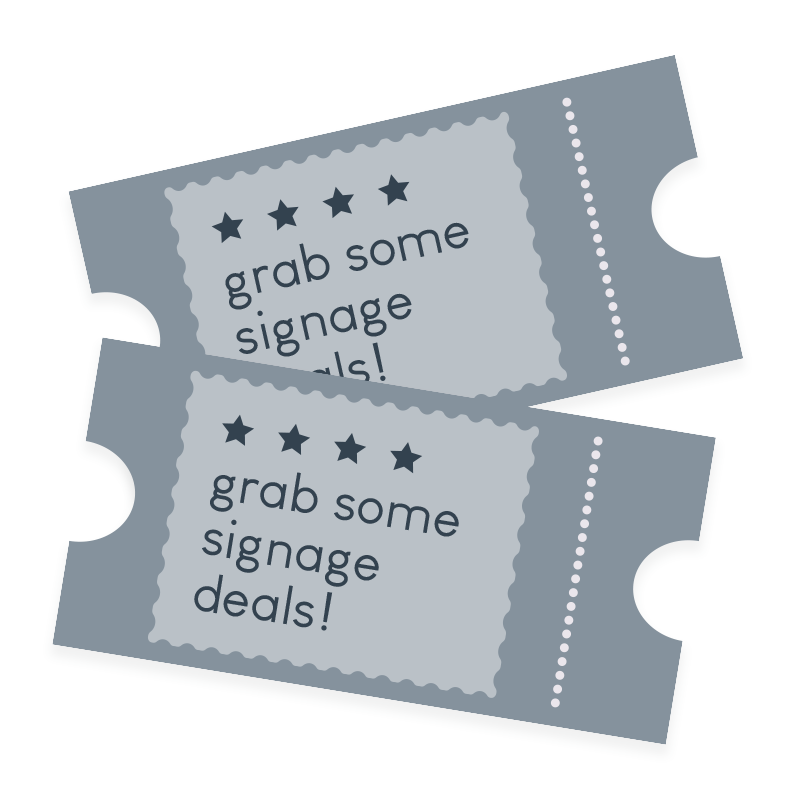
12 Oct Why just one advertising channel is not enough
So, you’ve got some budget put aside for advertising, but no idea how or where to start! Where do you advertise, how often should you advertise and should you say the same thing on every channel? Discover how common advertising channels stack up against one another and how to plan your advertising if you don’t have the luxury of media buyers and strategists to do the planning for you.
Planning
We know it seems boring, but planning is key. Dig out any research you have on your customers and their preferences. Get your business objectives together, note your organic activity like newsletters, social posts and have your calendar of activities handy (busy sales times, key events, etc). And most importantly pin down your budget. Use this information to understand specifically what you are trying to achieve, who your customers are and how, when, where and why they buy. All good advertising is built on sound planning.
Channels
In an ideal world, we’d have an unlimited budget and be able to throw advertising dollars at every channel and test our assumptions. This would make planning really easy, but most of us aren’t operating businesses in this sort of utopia! So how do the different channels stack up?
All advertising have a few things in common – the best ads command your attention, maintain your interest and encourage you to take some form of action. They rely on repetition, clear messaging and good execution.
Here are some of the pros and cons with each paid advertising channel to help build your plan.
TV
Long considered the gold standard for advertising due to its reach and credibility, television advertising is out of reach for most of our budgets, but here are the pros and cons of television advertising.
PROS
- High viewership numbers
- Broad reach
- High impact
- Credible
- Some demographic targeting is possible
- Allows for creativity with the combination of sight, sound and movement
- Good medium to reach children
CONS
- Expensive to buy and produce
- TV ratings are declining and the audience is decreasing
- People can channel surf and skip ads, edit them out altogether or use multiple tools at the same time eg. on computer or phone while ‘watching’ TV
- You can’t target specific areas
- Difficult to measure people’s response
For a trip down memory lane, check out these classic TV ads: https://www.bachcare.co.nz/blog/who-remembers-these-14-iconic-nz-ads/
Radio
More affordable than TV and easier to execute, radio feels like it shares the same wide reach and high trust – could it be the answer?
PROS
- Good reach
- Frequency – people are more loyal to a station than you might think
- Credibility – radio, like TV is considered trustworthy
- Loyal listeners – DJs inspire loyalty and with cross promotion (eg. streaming radio, social media posts, etc.) we feel like we know our radio personalities more, enhancing the loyalty of listeners and what we hear on ear
- Affordable – both buying spots and creating the ads themselves
- Targetable – radio knows a lot about their listeners – where they are, their ages and demographic info, as well as psychographic data
- Memorable – people remember what they hear twice as well as what they read
- Portable – in the car, at work, on your phone, etc.
CONS
- With a lack of visuals or the ability to have detail it makes it harder to express some ideas
- Abundance of choices – there are radio stations (and other audio like Spotify) to match many niches
- Variable price – depending on the choices you make and when you buy your radio spots, it can also be quite expensive. Plus, if you don’t have a strong strategy or solid creative, the spots could have little impact, making it an expenditure with little return.
- Clutter – your ad can appear in a sea of ads. How will you ensure you are remembered?
- Hard to measure – there’s no follow-up and it’s a big ask to expect a listener to respond to a call to action like remember this website, phone number or address!
OOH (out of home) advertising
OOH media is any visual advertising that you see outside of your home. This can include billboards, indoor and outdoor signs, ads on street furniture like bus shelters or benches, in transit areas like airports or train stations, and place-based ad media like you might see at a stadium or in the cinema (for the sake of this blog we’ve pulled cinema advertising into its own category).
PROS
- Reach people on the go – you’d be surprised at how much vehicle and foot traffic some areas get
- Cost-effective – outdoor advertising is one of the most cost-effective ways of reaching a mass audience
- If it’s a digital format you have the freedom to update your message as often as you need to or deliver real-time information and location-specific information
- Billboards are a great complement to other marketing activity, helping to extend your campaign reach
- They are unskippable – no ad blockers here!
- There’s evidence to say that people are more likely to click on an online ad if they have seen it OOH first
- OOH is seen as a friendlier, safer alternative to digital advertising for reaching target audiences
CONS
- Hard to evaluate its effectiveness
- Depending on the OOH media, you may have limited time for the audience to see your message (three seconds for a billboard)
- Limited space for messaging and complex imagery
- There may be strict rules to follow (eg word count on a billboard)
- Depending on what region you are advertising in there might be limited options available
- Can be hard to target based on demographics
Cinema
Now people are returning to see movies, is cinema advertising an option?
PROS
- You have a captive audience
- Audiences expect and accept ads
- Audiences are more receptive and ready to be entertained
- Audiences aren’t distracted
- Can be cost-effective compared to TV
- Quality – everything’s better on the big screen
- You can target based on the demographic the movie appeals to, that is by gender, age and location
CONS
- There are production costs
- Like TV it is hard to measure
- Ads have a short life
- Audiences might not remember your ad once the memory of the movie is in their mind
- Audiences might avoid your ad altogether as they know there will be 10 minutes or so before their movie start
- It can sometimes be difficult to reach your target audience at the time that it suits you depending on what movies are on
Print (eg. newspaper/magazine)
Print, a dying medium or tried and trusted?
PROS
- Inexpensive to produce
- Easy to change and update
- Traditionally high trust
- There are a variety of different rates, sizes and shapes
- There’s no time limit for people to read your ad so it can be good for explaining more complex information
- Newspaper is traditionally seen as good for older cohorts
- Magazines can be targeted based on demographics, interests and locations (think Live and MOOD magazines in Taranaki)
CONS
- Limited readership as digital subs go up
- Poor or inflexible printed image quality, some colours just get lost on newsprint
- Often no control over ad placement – both where you are and what story or ad you’re beside
- Hard to measure
- Not a catch-all for all demographics
- Can be expensive
Digital
Is digital as good as people say or am I just paying for something that I can’t see?
PROS
- Tight budget controls with the ability to adjust budget and spend on the fly
- Inexpensive production cost (no printing or postage)
- Pay per click means you pay only for results
- Flexible – your campaign can be rapidly updated or optimized based on results
- Measurable – track traffic to your site and online sales
- Track your ROI accurately
- An engaged active audience
- Strong targeting capabilities – target by location, interest and by keywords
- Strong creative targeting
- Retarget people who have visited your site but not converted, with remarketing
- Can be measured
CONS
- Limited space can constrain messaging and the ability to produce something creative
- Advertising clutter can result in declining click-through rates
- Targeting takes time and experimentation to find your audience
- Requires continual maintenance
- Management can’t always ‘see’ their investment
Beware
We see clients go wrong when they put all their eggs in one advertising ‘basket’ or just dip their toes in the water with one round of advertising and then conclude that advertising doesn’t work. The reality is there’s no one best channel, best time or perfect ad. Like people, brands and businesses are unique and so to are the customers and clients taking action.
Where to next?
Ideally, you would plan out a multi-channel campaign, layering up information starting with the top-level branding messages on the likes of TV, radio and print, layered with more specific call to action messages on channels where and when people can take action eg. digital channels.
In reality, advertising a small business might mean you use less channels and have a smaller budget, but you can still trial, test and tweak your advertising and use the results you gather to inform your next round of advertising.


 grab some signage deals!
grab some signage deals! download our website checklist
download our website checklist